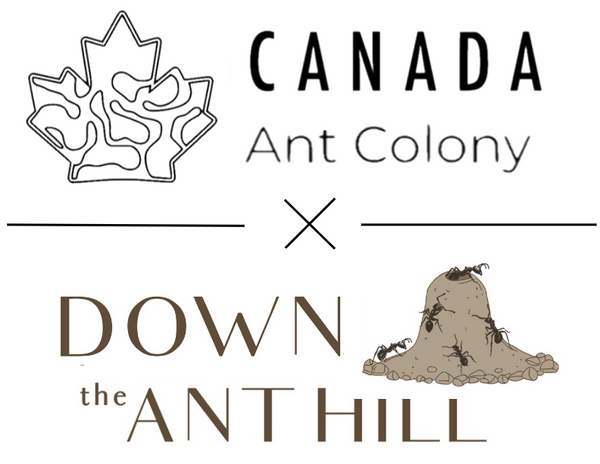Formica pallidefulva are very wide spread ants. They thrive in both warm and cold environments. Ranging from Southern Florida to Northern Canada, these ants thrive in nearly every climate. Their colour also changes based on their area and climate. These ants grow small colonies of about 1000 workers and grow fairly quickly. Their workers range from 4-8mm based on it’s maturity. The queens are super fast and powerful, they dig their claustral cells incredibly quickly.
For Canadians, you can purchase Bronze Formica pallidefulva here and Golden Formica pallidefulva here. For anyone in the United States, check them out at Stateside Ants

Pale Field Ant Queen and Workers. This is the Northern Form, with a more bronze color. Southern varieties become an orange or gold.
Taxonomy
Famila: Formicidae
Subfamilia: Formicinae
Tribus: Formicini
Genus: Formica
Species: Formica pallidefulva
Basic info
Origin: Likely originated from Canada and Northern United States, they have successfully spread across most of North America.
Habitat: Enjoys warm temperatures but doesn’t necessarily need them, I have kept them in an air-conditioned room and they have done just fine. They enjoy a very moist nest with a good amount of darkness.
Colonies from: Possibly polygynous, but can also found alone.
Colony size: 1000 workers
Colony age: 5 years
Founding: Fully claustral
Workers: Monomorphic
Nesting: These ants dig nests into dirt and often burrow quite deep. (at least a foot)
Hibernation: These ants require at least 3 months of hibernation in 4-6 degrees celsius.
Reproduction: Send out alates all summer.
Appearance
Workers: Black/maroon head with dark brown thorax. Gaster is black with a shiny tint. They also have black/brown legs.
Queen: Black head with a light brown thorax. Gaster is striped with brown and light brown. Also has a shiny strip on gaster.
Drone: Dark brown head with light brown thorax. Gaster is dark brown and the legs are semi-transparent.
Size
Workers: around 4-8mm long
Queens: 8-12mm long
Drones: around 6-7mm long
Development time at 75F (25C)
Egg to larvae: around 10 days
Larvae to pupae: around 7 days
Pupae to worker: Around 10 days
Egg to worker: 27 days
Ant keeping information
Recommendation: Great for beginners. Extremely hardy ants.
Temperature: 14-29° Celcius
Nesting materials: Nests in dirt.
Behaviour
These ants are quite entertaining to watch. Their foraging patterns are quite random and eratic. They run around super fast and just use their antennae to detect food. When they hunt they grab their prey’s legs and stretch it out. Then some workers spit formic acid all over them.
They are active during the day.
Additional information
Formica pallidefulva love sugars and will create large-scale trails.
Formica pallidefulva are extremely good at escaping as they normally attempt to climb the barrier many times a day. I find that using fluon works best.
Diet
Sugars
Formica pallidefulva love honey and sugar water. From my experience, they don’t find too much interest in fruits at all.
Protein
As for protein, you should give them fruit flies and crickets. They don’t seem to really enjoy superworms and mealworms that much. If you are putting them into a natural setup, you may want to consider adding aphids as the ants “milk” them for sweet honeydew.
This guide was compiled and written by Daniel Cantin of the 'Ants and Antkeeping' discord server, which can be found here. https://discord.gg/YbZGvtR3
This guide has been posted with the permission of the authors. The original article may be found here. I have also made some edits based on my own observations
If you'd like to support this blog and are interested in ant supplies, check out https://canada-ant-colony.com for all your ant needs (if you're in Canada)
